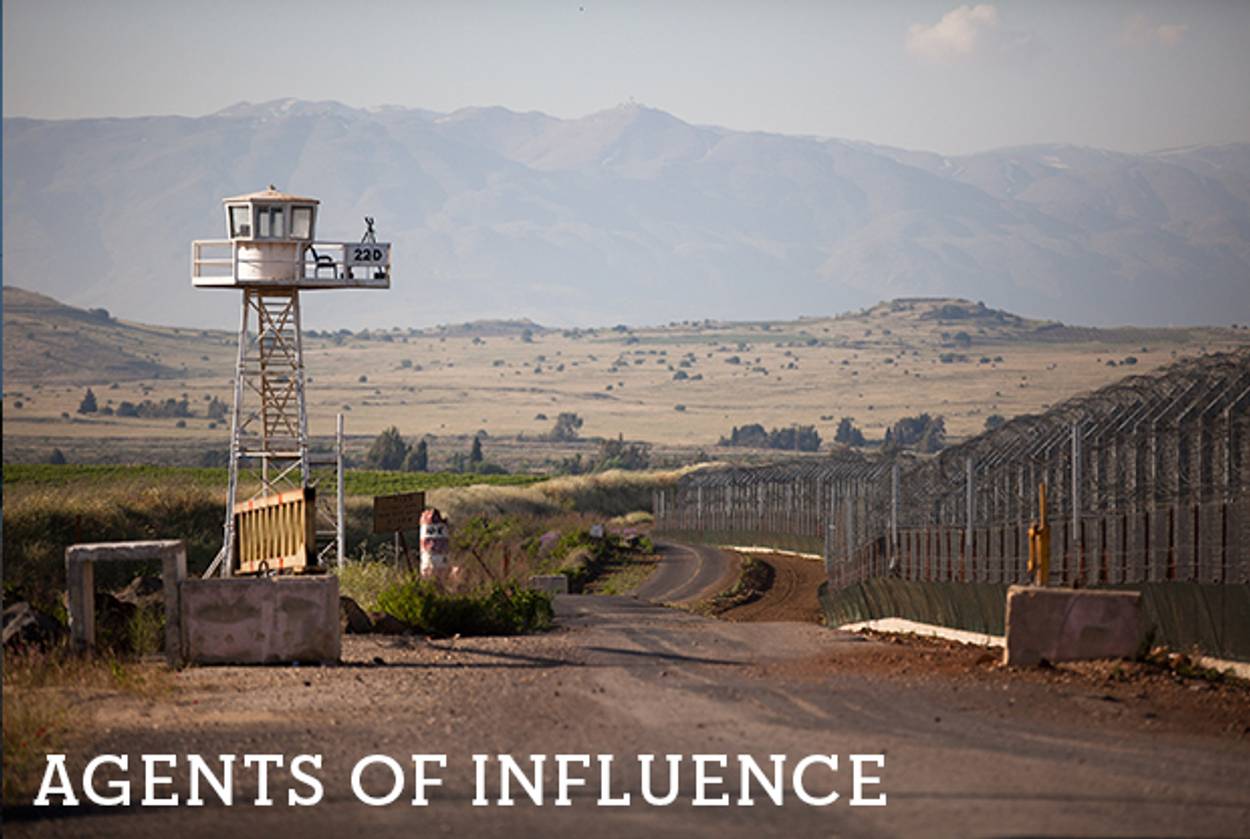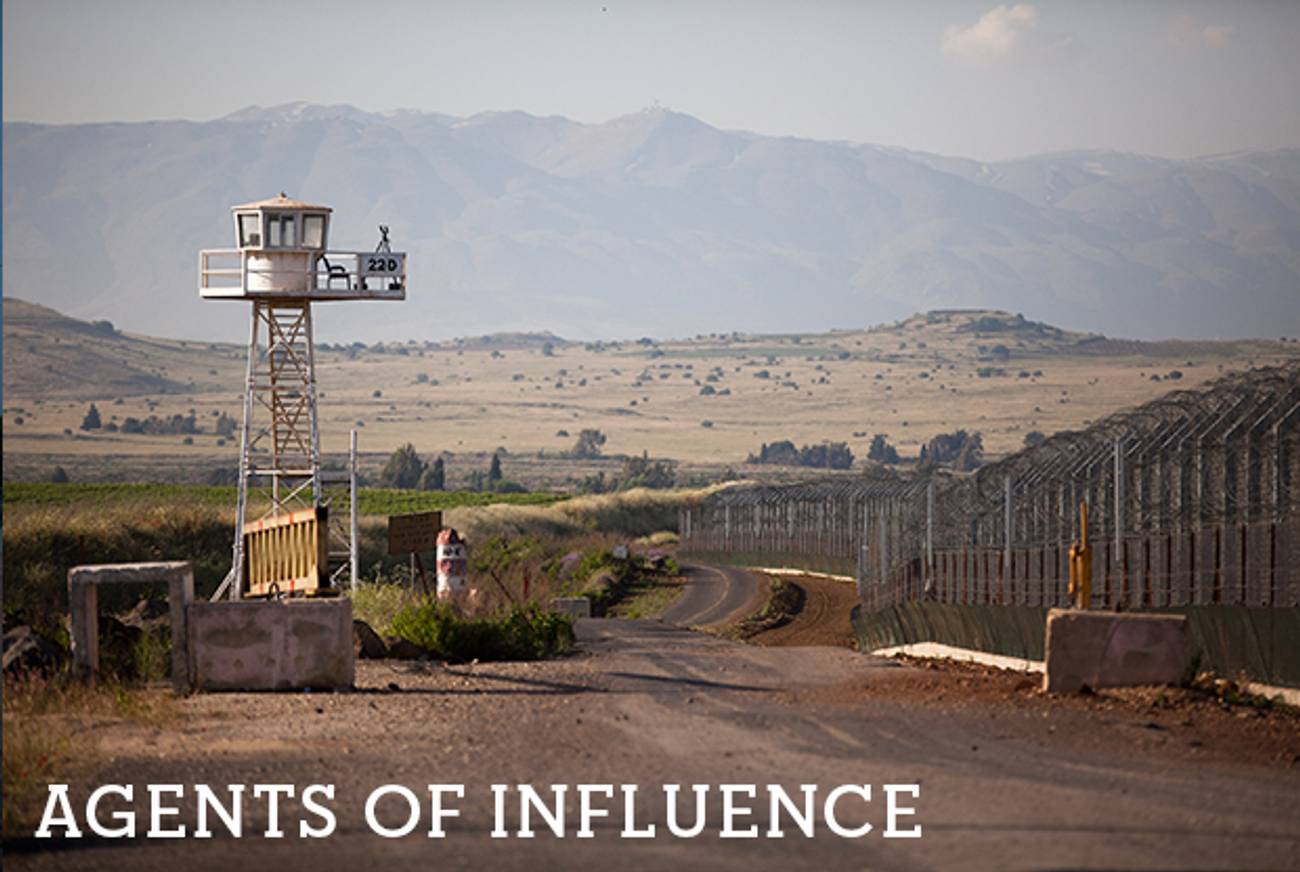The Golan Heights Chimera
How Israel’s annexation* of the contested border region continues to keep the peace




On Sunday, Israeli Air Force targeted sites around Damascus to stop the transfer of Iranian Fateh-110 missiles—capable of hitting all of Israel’s major population centers from all of Lebanon—to Hezbollah. But what if those missiles were in the hands of Syrian (or Iranian) troops sitting on top of the Golan Heights?
That’s precisely what would have happened if America’s foreign-policy wise men from James Baker to Martin Indyk had their way. As recently as 2010, Indyk, a Middle East adviser to the Clinton White House and a former U.S. ambassador to Israel, was arguing that Israel should give away the Golan—in order to promote a wider peace in the Middle East. “Nothing could better help Obama to isolate Iran,” wrote Indyk, “than for Netanyahu to offer to cede the Golan, as four other Israeli prime ministers have, in exchange for peace with Syria, which serves as the conduit for Tehran’s troublemaking in the Arab-Israeli arena.”
But of course that’s precisely why the Iranians would never let Syrian President Bashar al-Assad make such a deal even if he wanted to. Syria is a vital Iranian interest—Iran’s 35th province, said one Iranian cleric—which is why Tehran has dispatched thousands of Iranian troops along with Hezbollah fighters to protect the Assad regime. Indyk’s peace proposal, seen in the light of the many tens of thousands of Syrians that Assad has killed, reads like lunacy. But to be fair, he had plenty of company. For 40 years, Washington’s Middle East hands believed that Syria was the key to peace in the Middle East. As Henry Kissinger put it, there’s no war without Egypt and no peace without Syria. And what Damascus wanted in exchange for signing a deal, U.S. policymakers (Democrat and Republican alike) believed, was the Golan Heights.
The backstory went like this: Hafez al-Assad, the father of Syria’s current and besieged president, was defense minister when Syria lost the Golan in the 1967 war. As President Assad in the 1973 war, he regained the Golan briefly when the hostilities broke out but then lost it again after some of that conflict’s fiercest fighting. Israel then annexed the Golan in 1981 in the face of international condemnation and outrage. Just like Sadat had to absolve his nation’s shame by “defeating” Israel and then receiving the Sinai as part of a negotiated peace, Assad also needed a prize; get the Israelis to return the Golan and he’d make peace just like Sadat. In the words of former Secretary of State James Baker, “A deal is there to be had.”
Baker pushed hardest on the Syria track at the 1991 peace conference he convened in Madrid in the hopes of forging a broader Middle East peace at the end of Cold War. While American presidents, from Ford through Clinton, had given Israel assurances that it would not have to return the Golan, Baker seems to have wanted a deal so much that this respected statesman wound up advocating the Syrian position. He scolded Israel for building a new settlement for Soviet immigrants (Israel’s post-Cold War peace dividend) on the Golan, calling it provocative and leading some Israelis to wonder if the United States even understood why giving back the Sinai had been possible. As Dore Gold, who would later become Israel’s former ambassador to the United Nations, explained at the time: “One of the reasons that the deal in Sinai was possible is that basically Israel traded away territory but acquired 120 miles of demilitarization in exchange.” To do the same with the Golan, said Gold, “You’d have to put the Syrian Army somewhere behind Damascus.”
Which seems simple enough. Nonetheless, even after Baker and Bush failed, Bill Clinton’s administration pushed for an Israeli-Syrian accord, premised on Israel returning the Golan—leaving Syria on top of the commanding heights from which they had regularly shelled Israeli farms and towns before the 1967 war. After Clinton’s efforts came to nothing, George W. Bush was excoriated for not engaging Damascus, with Baker describing Bush’s deliberate isolation of Syria as “ridiculous.” To Baker and his fellow wise men, Republican and Democrat, it mattered little that Bush’s decision was taken only after the Syrian regime had assassinated former Lebanese prime Rafik Hariri in Beirut, and while Assad was ushering large numbers of foreign jihadists into Iraq to kill U.S. troops. The Golan Heights, thought the wise men, was now clearly the key to a larger regional settlement that would isolate Iran. In 2006, Baker and Lee Hamilton’s Iraq Study Group argued that, “in the context of a full and secure peace agreement, the Israelis should return the Golan Heights, with a U.S. security guarantee for Israel that could include an international force on the border, including U.S. troops if requested by both parties.”
When President Barack Obama came into office promising to engage rogue regimes like the one in Damascus, the hearts of the wise men were gladdened once more. John Kerry, the man who was at the time Assad’s biggest cheerleader in Washington, told The New Yorker in 2009 of his consultations with the Syrian president: “He told me he’s willing to … have direct discussions with Israel over the Golan Heights—with Americans at the table. I will encourage the Administration to take him up on it.”
So, why was everyone so wrong about the Golan Heights being the key to peace? As the Syrian uprising has turned into a full-blown civil war over the last two years, many observers have been surprised by the sectarian furies this conflict has unleashed. The Assad regime, as even the most casual newsreaders now understand, is drawn from a minority heterodox Shia sect, the Alawites, that accounts for roughly 11 percent of the Syrian population that has ruled over the roughly 60 percent Sunni Arab majority since 1966. The way that this despised minority held off their much more numerous rivals was, in large part, by summoning up the threat of an even more loathed external enemy—Israel.
So, if American policymakers thought that getting back the Golan would redeem Hafez al-Assad, and later his son Bashar, and allow them to make peace with Israel, they misread the situation entirely. Peace with Israel was the last thing that the Assads ever had in mind, since it would mean the end of the external threat that legitimized their rule. The Syrian regime could not afford to get the Golan back, even if the prime minister of Israel woke up one morning and signed it over for nothing.
The fact that the Assads’ hatred of Israel was less personal than it was strategic was lost on generations of American statesmen who believed that peace was within reach. Israel’s annexation* of the Golan, and its willingness to enforce red lines, is what kept the Syrian border quiet for 40 years. Holding on to the Golan ensured a peace that was much more concrete than the fantasies served up year after year by American diplomats eager to replicate the success of the Camp David Peace Accords between Israel and Egypt.
Nonetheless, once the Syrian civil war is decided, whether that’s next month, next year, or next decade, and a decent interval has passed, there will doubtless be more calls for Israel to trade away the Golan—in order to prop up a shaky democratic government in Syria, or prevent Iran from expanding its influence even further in the region. A new generation of American officials will make the same arguments as those offered by Baker, Kerry, Indyk, and their peers—updated to account for whatever new reality materializes inside Syria. It was the Assad family that was the problem all along, the wise men will opine. And now that they are gone, it is time for Israel to relinquish the Golan Heights so that a new and more peaceful regional order might be born.
The reality, however, is that the status of the Golan Heights has no bearing whatsoever on the region as a whole—any more than giving over the Gaza Strip to Hamas has brought about peace anywhere, including Gaza. A Golan deal would not have kept the Muslim Brotherhood from coming to power in Egypt, or made their rule more tenable. Nor would it have decided the fate of America’s decade-long investment in Iraq. The Golan Heights has no impact whatsoever on the Persian Gulf kingdoms or North Africa. Nor would a Syrian presence in the Golan have secured the Hashemite regime in Jordan, or convinced Hezbollah to stop committing acts of terror in Europe or inside Lebanon.
The only people whose lives would have been changed by new ownership on the Golan Heights were the Assads and the Israelis, both of whom would have been affected for the worse, which is why a deal was never done. The only winner would have been the Iranian Revolutionary Guards Corps, whose weapons, if Washington had its way, would now be hanging over the Galilee like a dark umbrella.
*Israel did not in fact annex the Golan Heights itself. Rather, in 1981, the Israeli government passed legislation extending Israeli civil law, not military law, to the area. This was the basis for offering Israeli ID cards to the Druze (which only a few of them took). Nonetheless, the law was condemned unilaterally, and rejected by U.N. Security Council resolution 497, which called on Israel to rescind its de facto “annexation” of the Golan.
***
Like this article? Sign up for our Daily Digest to get Tablet Magazine’s new content in your inbox each morning.
Lee Smith is the author of The Consequences of Syria.
Lee Smith is the author of The Permanent Coup: How Enemies Foreign and Domestic Targeted the American President (2020).